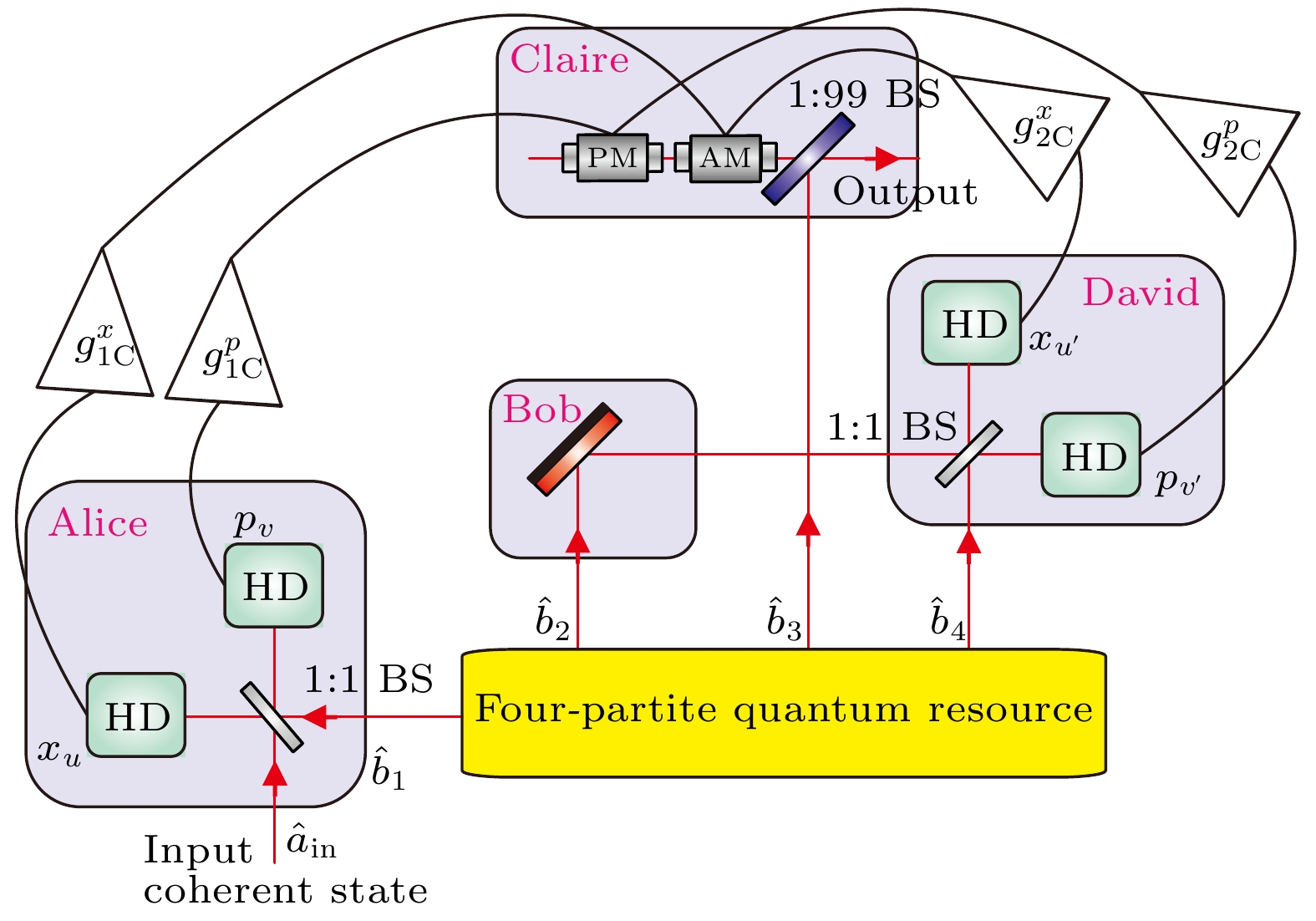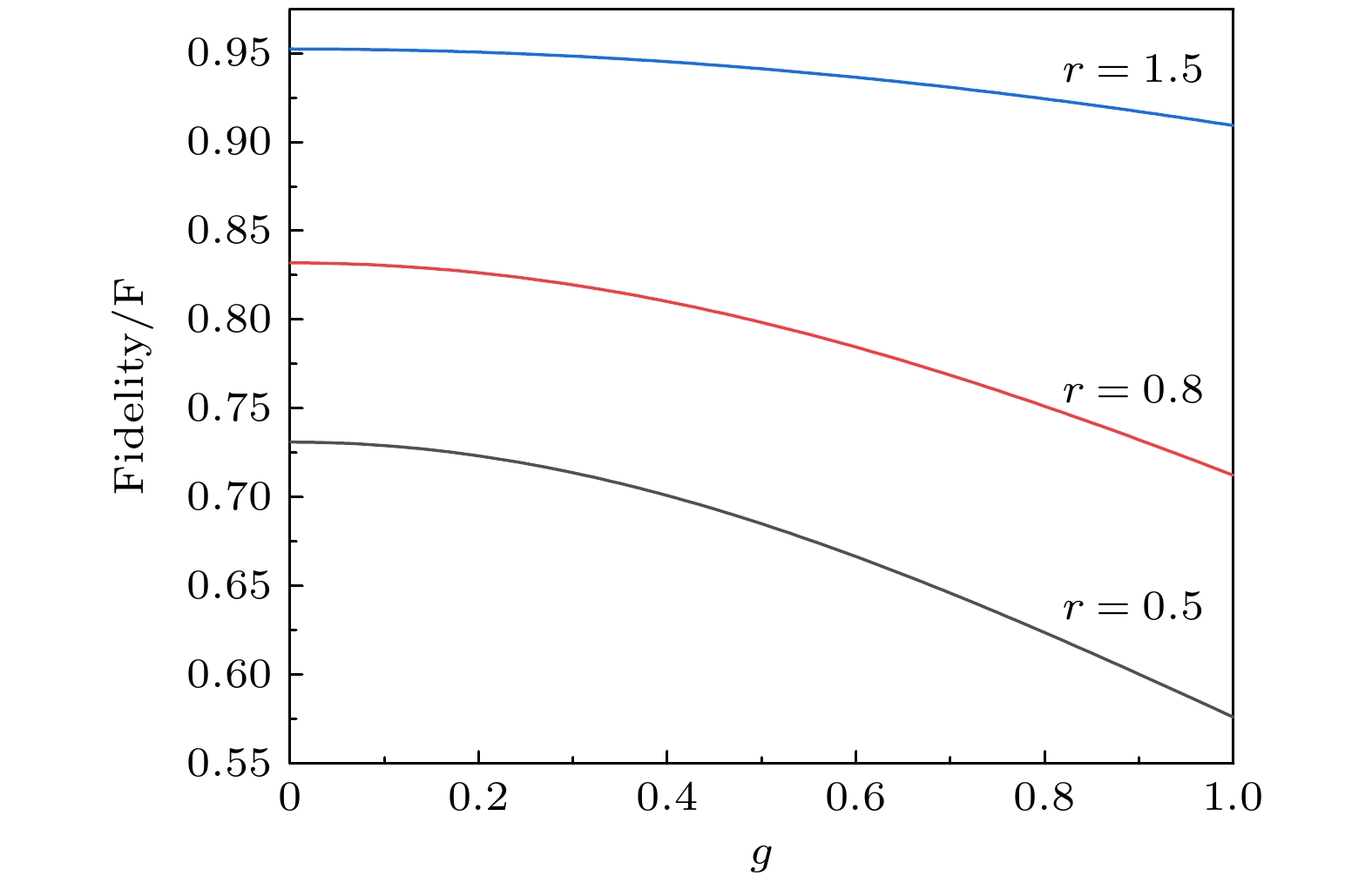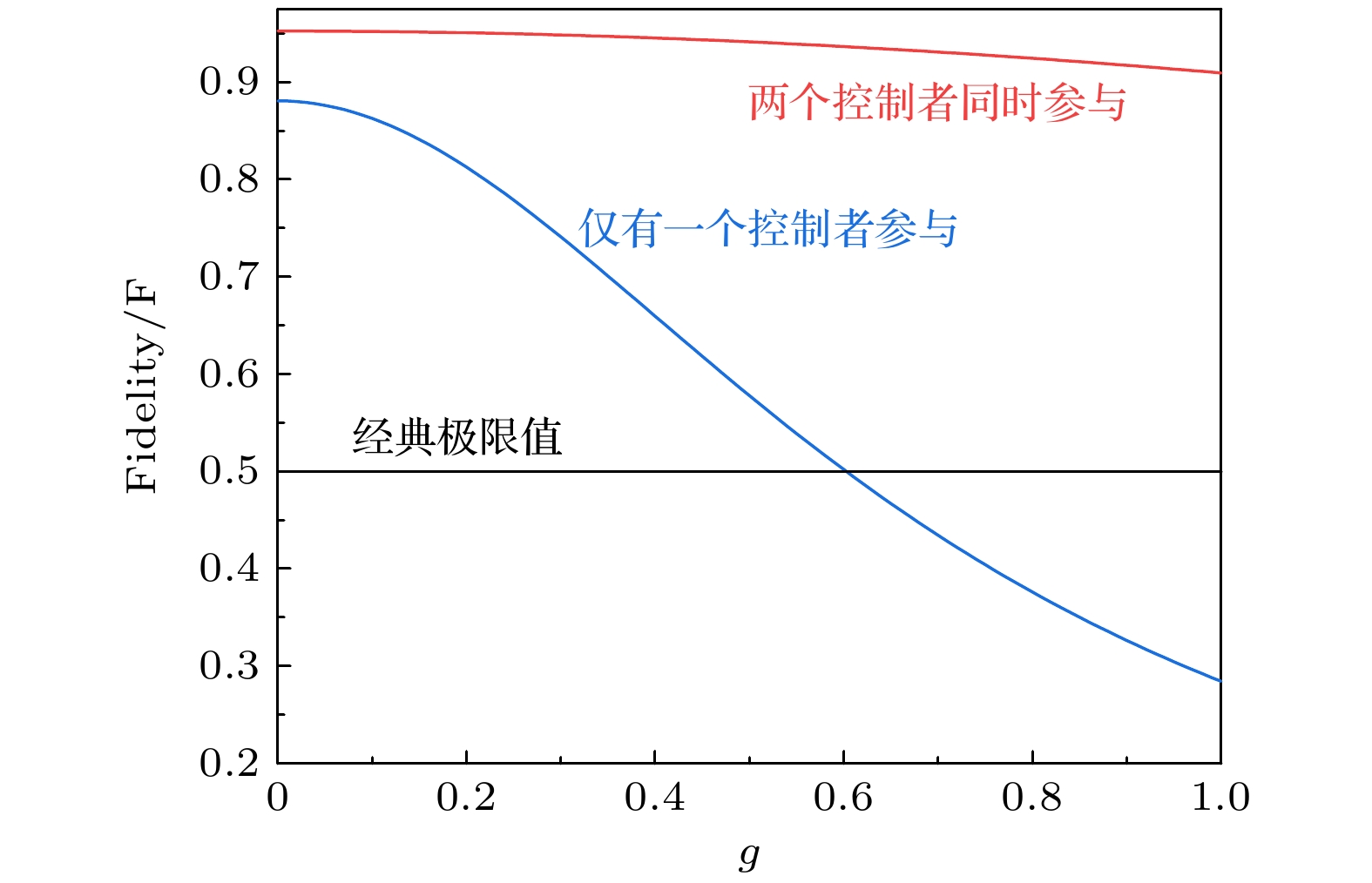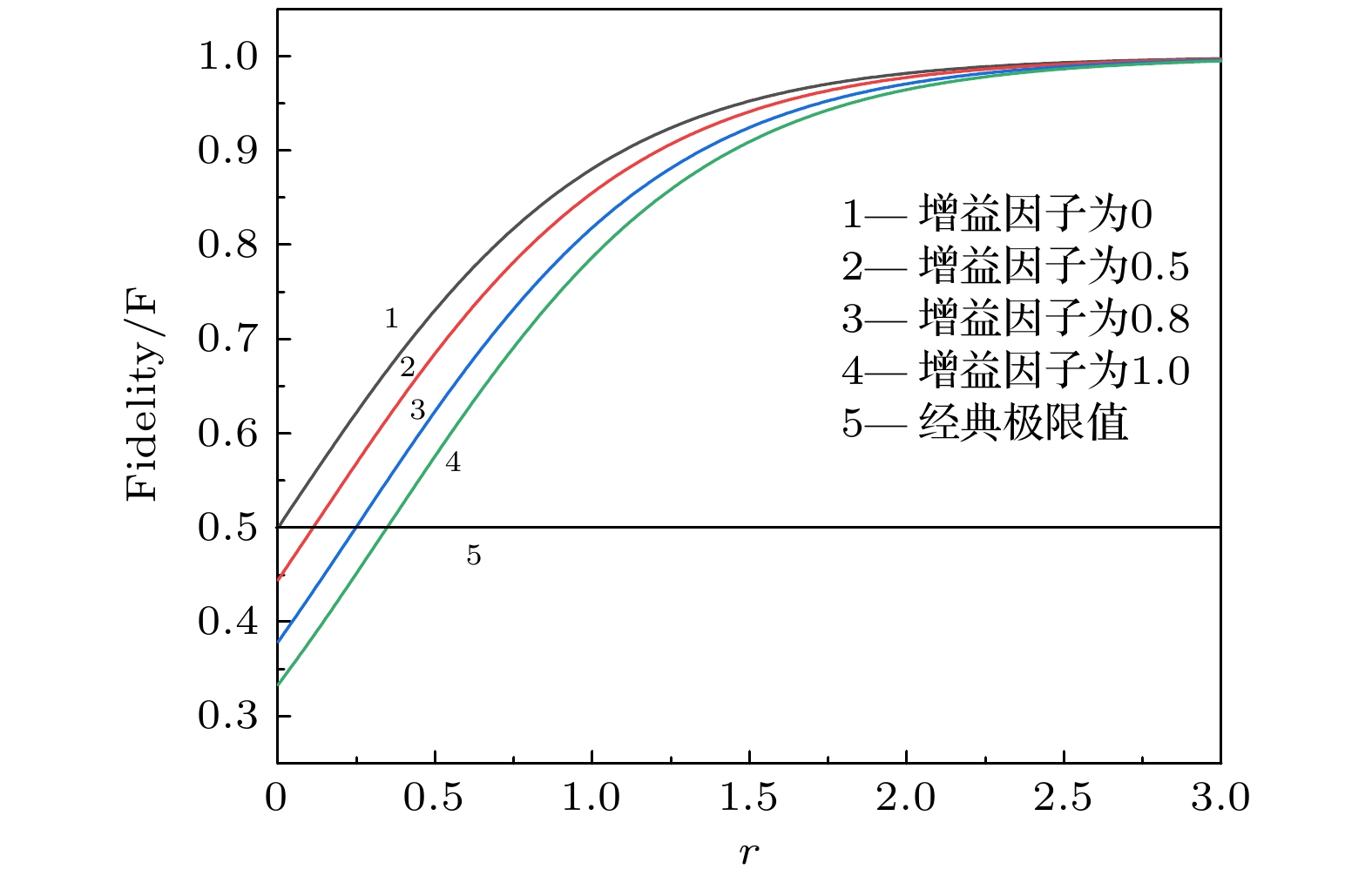-
Quantum teleportation is one of the most basic quantum protocols, which transfers an unknown quantum state from one location to another through local operation and classical communication by using shared quantum entanglement without physical transfer of the information carrier. And it has been widely used in various quantum information protocols such as entanglement swapping, quantum repeaters, quantum gate teleportation, quantum computation based on measurement, and quantum teleportation networks, which have important application value in quantum computation and quantum information. Quantum teleportation is a naturally bipartite process, in which an unknown quantum state can only be transmitted from one node to another. With the further development of quantum information research, it is necessary to transfer quantum states or quantum information among more and more nodes. Multipartite quantum protocols are expected to form fundamental components for larger-scale quantum communication and computation. A bipartite quantum teleportation should be extended to a multipartite protocol known as a quantum teleportation network. In this paper, a multifunctional quantum teleportation network is proposed theoretically. We first propose a special method of constructing four-partite quantum resources in continuous variables (CVs), and based on this, construct two different types of CV quantum teleportation networks. One type of network contains just one quantum teleportation process consisting of a sender, a receiver and two controllers. In this type of network, the unknown quantum state can be recovered at any other node according to the requirement after the measurement in the input node, which enriches the transfer direction and transfer mode of the unknown quantum state. And meanwhile, the two controllers can control the transfer of a quantum state from the sender to the receiver by restricting the sender and receiver’s access to their information, which makes the quantum teleportation network controllable. The other type of network has two quantum teleportation processes, each containing only a sender, a receiver and no controllers, which increases the number of quantum states that can be transmitted. Then we analyze the dependence of the fidelity of each quantum teleportation network on different physical parameters, and compare the characteristics, advantages and disadvantages among different types of quantum teleportation networks. The scheme for constructing a multifunctional quantum teleportation network in this paper shows some advantages, such as the greater number of quantum nodes, diversity of types, simple operation procedure. And all these advantages provide a broader application prospect for establishing larger and more complex quantum information networks in the future and quicken the pace of the application of quantum information.
-
Keywords:
- quantum teleportation network /
- controllability /
- multifunction /
- fidelity
[1] Bennett C H, Brassard G, Crépeau C, Jozsa R, Peres A, Wootters W K 1993 Phys. Rev. Lett. 70 1895
 Google Scholar
Google Scholar
[2] Bouwmeester D, Pan J W, Mattle K, Eibl M, Weinfurter H, Zeilinger A 1997 Nature 390 575
 Google Scholar
Google Scholar
[3] Boschi D, Branca S, Martini F D, Hardy L, Popescu S 1998 Phys. Rev. Lett. 80 1121
 Google Scholar
Google Scholar
[4] Nielsen M A, Knill E, Laflamme R 1998 Nature 396 52
 Google Scholar
Google Scholar
[5] Marcikic I, Riedmatten H D, Tittel W, Zbinden H, Gisin N 2003 Nature 421 509
 Google Scholar
Google Scholar
[6] Furusawa A, Sørensen J L, Braunstein S L, Fuchs C A, Kimble H J, Polzik E S 1998 Science 282 706
 Google Scholar
Google Scholar
[7] Bowen W P, Treps N, Buchler B C, Schnabel R, Ralph T C, Bachor H A, Symul T, Lam P K 2003 Phys. Rev. A 67 032302
 Google Scholar
Google Scholar
[8] Zhang T C, Goh K W, Chou C W, Lodahl P, Kimble H J 2003 Phys. Rev. A 67 033802
 Google Scholar
Google Scholar
[9] Su X L, Tian C X, Deng X W, Li Q, Xie C D, Peng K C 2016 Phys. Rev. Lett. 117 240503
 Google Scholar
Google Scholar
[10] Pan J W, Bouwmeester D, Weinfurter H, Zeilinger A 1998 Phys. Rev. Lett. 80 3891
 Google Scholar
Google Scholar
[11] Makino K, Hashimoto Y, Yoshikawa J I, Ohdan H, Toyama T, Loock P V, Furusawa A 2016 Sci. Adv. 2 e1501772
 Google Scholar
Google Scholar
[12] Briegel H J, Dür W, Cirac J I, Zoller P 1998 Phys. Rev. Lett. 81 5932
 Google Scholar
Google Scholar
[13] Xu J S, Yung M H, Xu X Y, Tang J S, Li C F, Guo G C 2016 Sci. Adv. 2 e1500672
 Google Scholar
Google Scholar
[14] Gottesman D, Chuang I L 1999 Nature 402 390
 Google Scholar
Google Scholar
[15] Raussendorf R, Briegel H J 2001 Phys. Rev. Lett. 86 5188
 Google Scholar
Google Scholar
[16] Bouchard F, Fickler R, Boyd R W, Karimi E 2017 Sci. Adv. 3 e1601915
 Google Scholar
Google Scholar
[17] Vaidman L 1994 Phys. Rev. A 49 1473
 Google Scholar
Google Scholar
[18] Ren J G, Xu P, Yong H L, et al. 2017 Nature 549 70
 Google Scholar
Google Scholar
[19] Huo M R, Qin J L, Cheng J L, Yan Z H, Qin Z Z, Su X L, Jia X J, Xie C D, Peng K C 2018 Sci. Adv. 4 eaas9401
 Google Scholar
Google Scholar
[20] Su X L, Zhao Y P, Hao S H, Jia X J, Xie C D, Peng K C 2012 Opt. Lett. 37 5178
 Google Scholar
Google Scholar
[21] Yukawa M, Ukai R, Loock P V, Furusawa A 2008 Phys. Rev. A 78 012301
 Google Scholar
Google Scholar
[22] Loock P V, Braunstein S L 2000 Phys. Rev. Lett. 84 3482
 Google Scholar
Google Scholar
[23] Yonezawa H, Aoki T, Furusawa A 2004 Nature 431 430
 Google Scholar
Google Scholar
[24] Karlsson A, Bourennane M 1998 Phys. Rev. A 58 4394
 Google Scholar
Google Scholar
[25] Lee J, Kim M S 2000 Phys. Rev. Lett. 84 4236
 Google Scholar
Google Scholar
[26] Lee J, Min H, Oh S D 2002 Phys. Rev. A 66 052318
 Google Scholar
Google Scholar
[27] Chen X B, Xu G, Yang Y X, Wen Q Y 2010 Opt. Commun. 283 4802
 Google Scholar
Google Scholar
[28] Zheng Y Z, Gu Y J, Guo G C 2002 Chin. Phys. B 11 537
 Google Scholar
Google Scholar
[29] Man Z X, Xia Y J, An N B 2007 Phys. Rev. A 75 052306
 Google Scholar
Google Scholar
[30] Li S S, Nie Y Y, Hong Z H, Yi X J, Huang Y B 2008 Commun. in Theoretical Phys. 50 633
 Google Scholar
Google Scholar
[31] Pirandola S, Eisert J, Weedbrook C, Furusawa A, Braunstein S L 2015 Nat. Photonics 9 641
 Google Scholar
Google Scholar
[32] He G Q, Zhang J T, Zeng G H 2008 J. Phys. B: At. Mol. Opt. Phys. 41 215503
 Google Scholar
Google Scholar
[33] Ren L J, He G Q, Zeng G H 2008 Phys. Rev. A 78 042302
 Google Scholar
Google Scholar
[34] Takeno Y, Yukawa M, Yonezawa H, Furusawa A 2007 Opt. Express 15 4321
 Google Scholar
Google Scholar
[35] Vahlbruch H, Mehmet M, Chelkowski S, Hage B, Franzen A, Lastzka N, Goßler S, Danzmann K, Schnabel R 2008 Phys. Rev. Lett. 100 033602
 Google Scholar
Google Scholar
[36] Zhou Y Y, Jia X J, Li F, Xie C D, Peng K C 2015 Opt. Express 23 4952
 Google Scholar
Google Scholar
[37] Braunstein S L, Fuchs C A, Kimble H J 2000 J. Mod. Opt. 47 267
 Google Scholar
Google Scholar
[38] Braunstein S L, Fuchs C A, Kimble H J, Loock P V 2001 Phys. Rev. A 64 022321
 Google Scholar
Google Scholar
[39] Yu T, Eberly J H 2009 Science 323 598
 Google Scholar
Google Scholar
[40] Almeida M P, Melo F D, Hor-Meyll M, Salles A, Walborn S P, Ribeiro P H S, Davidovich L 2007 Science 316 579
 Google Scholar
Google Scholar
[41] Barbara M T 2015 Rev. Mod. Phys. 87 307
 Google Scholar
Google Scholar
[42] Duan L, Guo G 1999 Phys. Lett. A 255 209
 Google Scholar
Google Scholar
[43] Vahlbruch H, Mehmet M, Danzmann K, Schnabel R 2016 Phys. Rev. Lett. 117 110801
 Google Scholar
Google Scholar
-
图 2 将一个未知量子态传送至Claire处的四组份量子远程传态网络的结构示意图, 其中AM为振幅调制器, PM为位相调制器, BS为分束器, HD为平衡零拍探测器
Figure 2. Schematic diagram of four-partite quantum teleportation network teleporting an unknown quantum state to Claire, where AM is Amplitude modulator, PM is Phase modulator, BS is Beam splitter, HD is Homodyne detector.
图 4 控制方数量不同的量子远程传态保真度随增益因子g的变化曲线对比图, 曲线1表示有两个控制者参与时的保真度, 曲线2表示仅有一个控制者参与时的保真度, 曲线3表示远程传态保真度的经典极限值
Figure 4. Dependences of the fidelity of quantum teleportation with different number of controllers on gain factor g, trace 1 is the calculated fidelity of quantum teleportation with two controllers, trace 2 is the calculated fidelity of quantum teleportation with only one controller, trace 3 is the classical limit of quantum teleportation.
图 5 可同时传送两个未知量子态的量子远程传态网络结构示意图, 其中 AM为振幅调制器, PM为位相调制器, BS为分束器, HD为平衡零拍探测器
Figure 5. Schematic diagram of four-partite quantum teleportation network that can simultaneously teleport two unknown quantum states, where AM is Amplitude modulator; PM is Phase modulator, BS is Beam splitter, HD is Homodyne detector.
图 6 量子远程传态保真度随压缩参数r的变化曲线, 曲线1—4分别对应增益因子为0, 0.5, 0.8和1时的保真度大小, 曲线5表示远程传态保真度的经典极限值
Figure 6. Dependences of the fidelity of quantum teleportation on squeezing factor r, the traces 1, 2, 3 and 4 are the calculated fidelity when gain factor is selected as 0, 0.5, 0.8 and 1, respectively, trace 5 is the classical limit of quantum teleportation.
-
[1] Bennett C H, Brassard G, Crépeau C, Jozsa R, Peres A, Wootters W K 1993 Phys. Rev. Lett. 70 1895
 Google Scholar
Google Scholar
[2] Bouwmeester D, Pan J W, Mattle K, Eibl M, Weinfurter H, Zeilinger A 1997 Nature 390 575
 Google Scholar
Google Scholar
[3] Boschi D, Branca S, Martini F D, Hardy L, Popescu S 1998 Phys. Rev. Lett. 80 1121
 Google Scholar
Google Scholar
[4] Nielsen M A, Knill E, Laflamme R 1998 Nature 396 52
 Google Scholar
Google Scholar
[5] Marcikic I, Riedmatten H D, Tittel W, Zbinden H, Gisin N 2003 Nature 421 509
 Google Scholar
Google Scholar
[6] Furusawa A, Sørensen J L, Braunstein S L, Fuchs C A, Kimble H J, Polzik E S 1998 Science 282 706
 Google Scholar
Google Scholar
[7] Bowen W P, Treps N, Buchler B C, Schnabel R, Ralph T C, Bachor H A, Symul T, Lam P K 2003 Phys. Rev. A 67 032302
 Google Scholar
Google Scholar
[8] Zhang T C, Goh K W, Chou C W, Lodahl P, Kimble H J 2003 Phys. Rev. A 67 033802
 Google Scholar
Google Scholar
[9] Su X L, Tian C X, Deng X W, Li Q, Xie C D, Peng K C 2016 Phys. Rev. Lett. 117 240503
 Google Scholar
Google Scholar
[10] Pan J W, Bouwmeester D, Weinfurter H, Zeilinger A 1998 Phys. Rev. Lett. 80 3891
 Google Scholar
Google Scholar
[11] Makino K, Hashimoto Y, Yoshikawa J I, Ohdan H, Toyama T, Loock P V, Furusawa A 2016 Sci. Adv. 2 e1501772
 Google Scholar
Google Scholar
[12] Briegel H J, Dür W, Cirac J I, Zoller P 1998 Phys. Rev. Lett. 81 5932
 Google Scholar
Google Scholar
[13] Xu J S, Yung M H, Xu X Y, Tang J S, Li C F, Guo G C 2016 Sci. Adv. 2 e1500672
 Google Scholar
Google Scholar
[14] Gottesman D, Chuang I L 1999 Nature 402 390
 Google Scholar
Google Scholar
[15] Raussendorf R, Briegel H J 2001 Phys. Rev. Lett. 86 5188
 Google Scholar
Google Scholar
[16] Bouchard F, Fickler R, Boyd R W, Karimi E 2017 Sci. Adv. 3 e1601915
 Google Scholar
Google Scholar
[17] Vaidman L 1994 Phys. Rev. A 49 1473
 Google Scholar
Google Scholar
[18] Ren J G, Xu P, Yong H L, et al. 2017 Nature 549 70
 Google Scholar
Google Scholar
[19] Huo M R, Qin J L, Cheng J L, Yan Z H, Qin Z Z, Su X L, Jia X J, Xie C D, Peng K C 2018 Sci. Adv. 4 eaas9401
 Google Scholar
Google Scholar
[20] Su X L, Zhao Y P, Hao S H, Jia X J, Xie C D, Peng K C 2012 Opt. Lett. 37 5178
 Google Scholar
Google Scholar
[21] Yukawa M, Ukai R, Loock P V, Furusawa A 2008 Phys. Rev. A 78 012301
 Google Scholar
Google Scholar
[22] Loock P V, Braunstein S L 2000 Phys. Rev. Lett. 84 3482
 Google Scholar
Google Scholar
[23] Yonezawa H, Aoki T, Furusawa A 2004 Nature 431 430
 Google Scholar
Google Scholar
[24] Karlsson A, Bourennane M 1998 Phys. Rev. A 58 4394
 Google Scholar
Google Scholar
[25] Lee J, Kim M S 2000 Phys. Rev. Lett. 84 4236
 Google Scholar
Google Scholar
[26] Lee J, Min H, Oh S D 2002 Phys. Rev. A 66 052318
 Google Scholar
Google Scholar
[27] Chen X B, Xu G, Yang Y X, Wen Q Y 2010 Opt. Commun. 283 4802
 Google Scholar
Google Scholar
[28] Zheng Y Z, Gu Y J, Guo G C 2002 Chin. Phys. B 11 537
 Google Scholar
Google Scholar
[29] Man Z X, Xia Y J, An N B 2007 Phys. Rev. A 75 052306
 Google Scholar
Google Scholar
[30] Li S S, Nie Y Y, Hong Z H, Yi X J, Huang Y B 2008 Commun. in Theoretical Phys. 50 633
 Google Scholar
Google Scholar
[31] Pirandola S, Eisert J, Weedbrook C, Furusawa A, Braunstein S L 2015 Nat. Photonics 9 641
 Google Scholar
Google Scholar
[32] He G Q, Zhang J T, Zeng G H 2008 J. Phys. B: At. Mol. Opt. Phys. 41 215503
 Google Scholar
Google Scholar
[33] Ren L J, He G Q, Zeng G H 2008 Phys. Rev. A 78 042302
 Google Scholar
Google Scholar
[34] Takeno Y, Yukawa M, Yonezawa H, Furusawa A 2007 Opt. Express 15 4321
 Google Scholar
Google Scholar
[35] Vahlbruch H, Mehmet M, Chelkowski S, Hage B, Franzen A, Lastzka N, Goßler S, Danzmann K, Schnabel R 2008 Phys. Rev. Lett. 100 033602
 Google Scholar
Google Scholar
[36] Zhou Y Y, Jia X J, Li F, Xie C D, Peng K C 2015 Opt. Express 23 4952
 Google Scholar
Google Scholar
[37] Braunstein S L, Fuchs C A, Kimble H J 2000 J. Mod. Opt. 47 267
 Google Scholar
Google Scholar
[38] Braunstein S L, Fuchs C A, Kimble H J, Loock P V 2001 Phys. Rev. A 64 022321
 Google Scholar
Google Scholar
[39] Yu T, Eberly J H 2009 Science 323 598
 Google Scholar
Google Scholar
[40] Almeida M P, Melo F D, Hor-Meyll M, Salles A, Walborn S P, Ribeiro P H S, Davidovich L 2007 Science 316 579
 Google Scholar
Google Scholar
[41] Barbara M T 2015 Rev. Mod. Phys. 87 307
 Google Scholar
Google Scholar
[42] Duan L, Guo G 1999 Phys. Lett. A 255 209
 Google Scholar
Google Scholar
[43] Vahlbruch H, Mehmet M, Danzmann K, Schnabel R 2016 Phys. Rev. Lett. 117 110801
 Google Scholar
Google Scholar
Catalog
Metrics
- Abstract views: 4001
- PDF Downloads: 94
- Cited By: 0














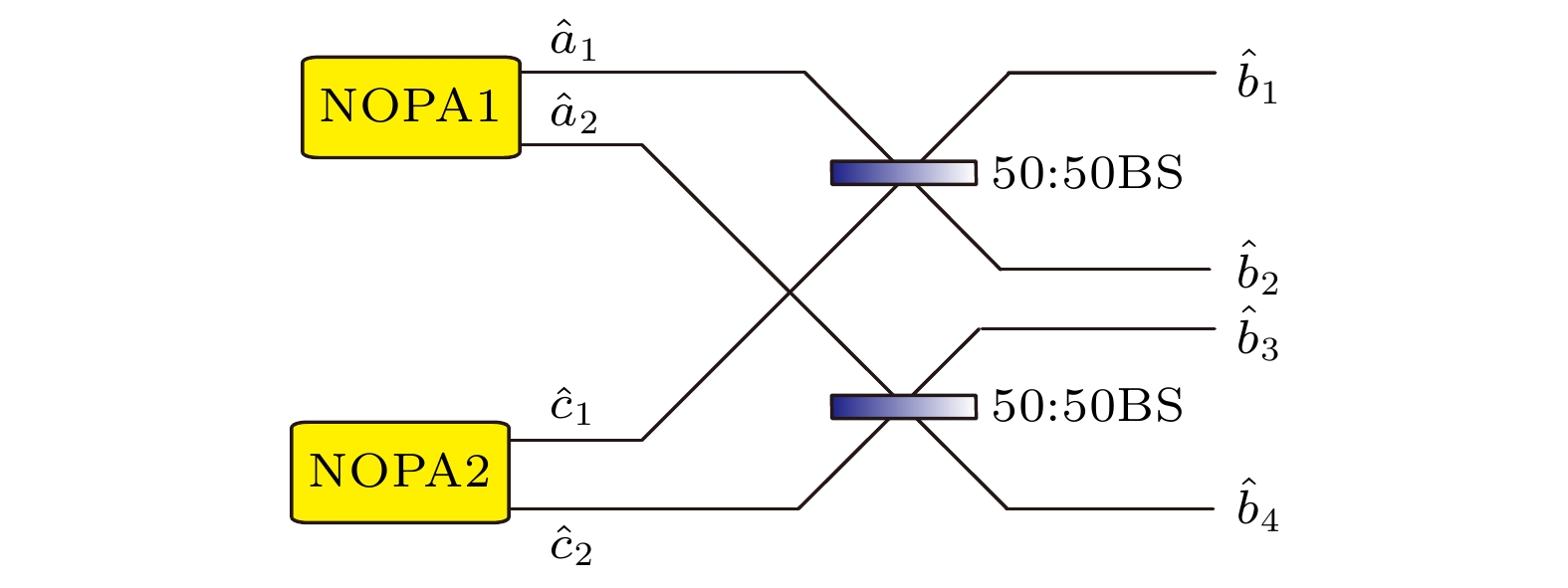
 DownLoad:
DownLoad:
